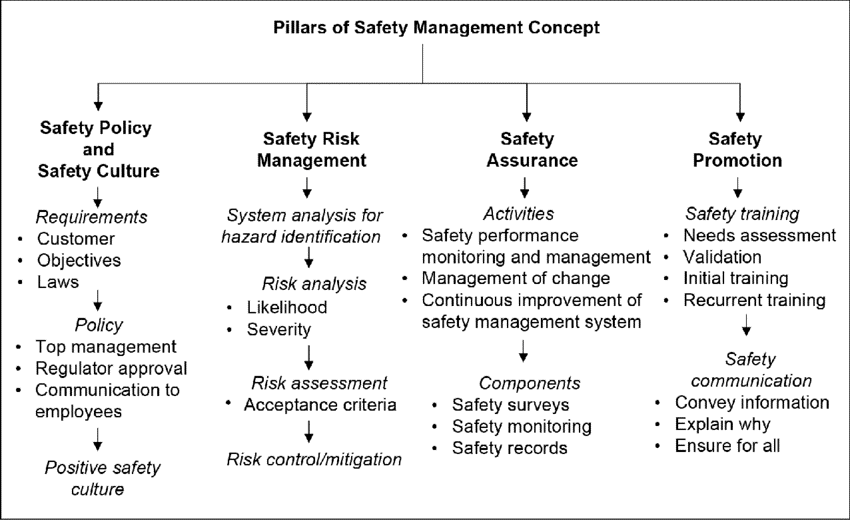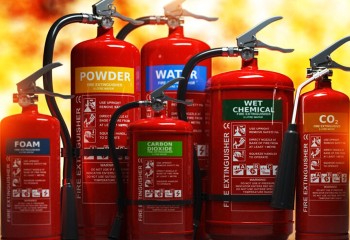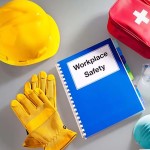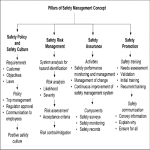Author: Sherifudeen Olasheni Carew
The pillars of safety are the foundation on which any successful safety management system is built. They provide a framework for organizations to identify and manage hazards, mitigate risks, and ensure the safety of their employees and others.
The four pillars of safety are:
1. Leadership and commitment: Safety must be a top priority for all leaders in an organization. They must demonstrate their commitment to safety through their words and actions and provide the resources and support necessary to implement and maintain a strong safety management system.
2. Hazard identification and assessment: Organizations must identify all potential hazards in their workplace and assess the associated risks. This includes both physical and human hazards. Once hazards have been identified and assessed, appropriate controls must be implemented to mitigate the risks.
3. Safe work practices: Employees must be trained on safe work practices and procedures. They must also be empowered to speak up about unsafe conditions and behaviors.
4. Monitoring and continuous improvement: Organizations must continuously monitor their safety performance and make improvements as needed. This includes reviewing data, conducting audits, and implementing corrective actions.
Here are some specific examples of how organizations can implement each pillar:
Leadership and commitment:
- Top leaders must publicly announce their commitment to safety and make it a priority in all decision-making.
- Safety must be integrated into the organization's overall business strategy.
- Leaders must provide employees with the resources and support they need to work safely.
Hazard identification and assessment:
- Organizations must use a variety of methods to identify hazards, such as job hazard analysis, risk assessments, and incident investigations.
- Hazards should be documented and prioritized based on their potential severity and likelihood of occurrence.
- Controls should be implemented to mitigate the risks associated with hazards.
Safe work practices:
- Employees should be trained on safe work practices and procedures for all tasks they perform.
- Employees should be empowered to speak up about unsafe conditions and behaviors.
- Organizations should have a system in place for reporting and investigating unsafe incidents.
Monitoring and continuous improvement:
- Organizations should collect data on their safety performance, such as accident rates, incident rates, and near-miss data.
- Organizations should conduct regular safety audits to identify areas for improvement.
- Organizations should implement corrective actions based on the results of their data collection and audits.
Example of each pillar in practice
· Leadership and culture: A company’s senior management demonstrates their commitment to safety by setting clear goals, allocating sufficient resources, and rewarding positive behaviors. They also foster a culture of trust, collaboration, and continuous improvement among all employees, encouraging them to report hazards, suggest solutions, and participate in safety activities.
· Systems and processes: A company implements a comprehensive safety management system that covers all aspects of its operations, from planning and design to execution and evaluation. The system includes policies, procedures, standards, and guidelines that are aligned with best practices and regulatory requirements. The system also incorporates regular audits, inspections, and reviews to monitor performance and identify areas for improvement.
· Behavior and competence: A company provides adequate training and coaching to all employees, ensuring that they have the necessary skills, knowledge, and attitudes to perform their tasks safely and efficiently. The company also promotes a behavior-based approach to safety, where employees are encouraged to observe, intervene, and provide feedback to each other on their safety behaviors. The company also recognizes and rewards employees who demonstrate exemplary safety behaviors.
· Results and improvement: A company measures and evaluates its safety performance using various indicators, such as accident rates, injury severity, near misses, compliance levels, and employee satisfaction. The company also analyzes the root causes of incidents and implements corrective and preventive actions to prevent recurrence. The company also seeks feedback from internal and external stakeholders, such as customers, suppliers, and regulators, and implements best practices and innovations to enhance its safety performance.
· Hand hygiene: A healthcare facility implements a hand hygiene program that includes education, reminders, monitoring, and feedback. The program aims to increase the compliance of healthcare workers with the World Health Organization’s guidelines on hand hygiene, which recommend washing hands with soap and water or using alcohol-based hand rubs before and after contact with patients, their environment, or any potentially infectious material. The program also provides adequate supplies and facilities for hand hygiene, such as sinks, dispensers, and posters.
· Process: A healthcare facility adopts a standardized process for preventing and controlling infections, such as the Centres for Disease Control and Prevention’s (CDC) guidelines for isolation precautions. The process involves identifying and isolating patients who have or are suspected of having an infectious disease, using appropriate personal protective equipment (PPE), and following proper procedures for handling and disposing of contaminated materials. The process also involves educating and training staff, patients, and visitors on the importance and methods of infection prevention and control.
· Surface measurement: A healthcare facility uses a surface measurement tool, such as the ATP (adenosine triphosphate) bioluminescence assay, to assess the cleanliness and disinfection of environmental surfaces, such as bed rails, tables, and keyboards. The tool measures the amount of organic matter, such as bacteria, viruses, and fungi, on a surface by detecting the presence of ATP, a molecule that is present in all living cells. The tool provides a numerical value that indicates the level of contamination and helps guide the frequency and effectiveness of cleaning and disinfection practices.
· Augmentation: A healthcare facility uses an augmentation product, such as a self-disinfecting coating, to enhance the protection of environmental surfaces from microbial contamination. The product is applied to surfaces that are frequently touched or difficult to clean, such as door handles, light switches, and faucets. The product contains an active ingredient, such as silver or copper, that kills or inhibits the growth of microorganisms on contact and provides a long-lasting antimicrobial effect.
· Emerging solutions: A healthcare facility adopts an emerging solution, such as a UV-C (ultraviolet C) light device, to supplement the existing cleaning and disinfection methods. The device emits UV-C light, which is a type of electromagnetic radiation that can damage the DNA and RNA of microorganisms, rendering them unable to reproduce or cause infection. The device is used to disinfect rooms or areas that have been occupied by patients with infectious diseases, or to decontaminate equipment or devices that are difficult to clean, such as mobile phones, tablets, and stethoscopes.
How can I implement these pillars in my workplace?
For the five pillars of occupational safety and health, you can start by assessing the current state of your workplace in terms of safety performance, culture, systems, behavior, and results. You can use tools such as surveys, audits, interviews, or observations to collect data and identify strengths and weaknesses. Based on the findings, you can then set realistic and measurable goals and objectives for improvement, and develop an action plan that specifies the roles, responsibilities, resources, and timelines for each pillar. You can also involve and communicate with all stakeholders, such as management, employees, customers, and regulators, to ensure their support and participation. Finally, you can monitor and evaluate the progress and outcomes of your action plan and adjust as needed.
Some common challenges in implementing the five pillars of safety, regardless of the context, are:
Ambiguous responsibilities: It can be difficult to assign clear roles and accountabilities for each pillar, especially when there are multiple stakeholders involved. This can lead to confusion, duplication, or omission of tasks, and undermine the effectiveness and efficiency of the safety process.
Lack of clear priorities: It can be challenging to balance the competing demands and expectations of different pillars, especially when there are limited resources and time. This can result in a lack of focus, alignment, or integration of the safety activities, and compromise the quality and consistency of the safety outcomes.
Employee engagement: It can be hard to motivate and involve employees in the safety process, especially when they face barriers such as lack of knowledge, skills, or incentives. This can affect their compliance, participation, or feedback on the safety pillars, and reduce their sense of ownership and responsibility for the safety performance.
Employees taking shortcuts or ignoring rules: It can be tempting for employees to bypass or disregard the safety pillars, especially when they perceive them as unnecessary, inconvenient, or ineffective. This can expose them to higher risks of accidents, injuries, or infections, and jeopardize the safety of themselves and others.
Conclusion
By implementing these pillars of safety, organizations can create a safer workplace for everyone.







